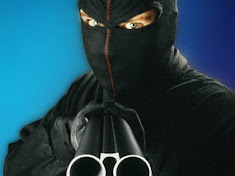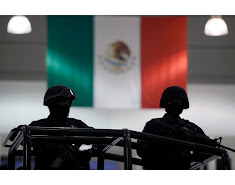The man police believe killed the gangster who helped set up the now-defunct Halifax Hells Angels is dead. The body of Jeffrey Albert Lynds was discovered in a Montreal jail cell, where the 43-year-old was on trial for a 2010 double murder in Quebec. It is believed that the former member of the elite Hells Angels group the Nomads, committed suicide. Police would not confirm the identity, but Sgt. Claude Denis of the Surete du Quebec told thechronicleherald.ca that a 43-year old man was found dead in his cell at Riviere des Prairies Detention Centre. "He was found without life inside the (cell). We do not have any violence mark on the victim." Sources told the Montreal Gazette the deceased is Lynds. Denis said police were called to Riviere des Pariries detention centre just after noon Friday. An autopsy is scheduled on Monday. A former member of the Halifax Hells Angels, Lynds was named in court documents as the killer of Randy Mersereau whose body was discovered in a wooded lot in North River, outside Truro, in Dec. 2010. He was never charged in Mersereau's death. After cofounding the Halifax chapter of the outlaw biker gang, Mersereau left in the 1990s to set up his own drug operation. He disappeared Oct. 31,1999, not long after a bomb exploded at a used-car dealership in Bible Hill that injured several people. Mersereau is believed to have been the target of that Sept. 23 bombing. A year later, in Sept. 2000, Randy's brother, Kirk Mersereau, 48, and Kirk's common-law wife Nancy Christensen, 47, were also shot dead in their rural Hants County home. In their book, The Road to Hell: How the Biker Gangs are Conquering Canada, journalists William Marsden and Julian Sher write that Kirk put a $50,000 bounty on the head of anyone connected to his brother's murder. Police have charged Dean David Whynott of Truro Heights and Gerald MacCabe of Salmon River both with being an accessory after the fact in Randy Mersereau's murder. Court documents filed in connection with MacCabe's case point to Lynds as Randy's killer. News reports in 2010 said Lynds admitted shooting Randy five times with a handgun provided by the Hells Angels. Lynd's nephew, 34-year-old Curtis Blair Lynds, was charged with accessory after the fact in Randy Mersereau's death, and first-degree murder in the deaths of Kirk Mersereau and Christensen. Leslie Douglas Greenwood, 41, is also accused of first-degree murder in the deaths of the couple. Curtis Lynds and Greenwood are in jail, awaiting court appearances. Michael John Lawrence, 37, from Windsor has already pleaded guilty - and is serving a life sentence - for shooting the couple, as well as Charles Maddison, a man who offered him a drive and whose truck he stole before committing the double homicide. Jeffrey Lynds was picked up during a series of raids that targeted the Halifax Hells Angels chapter in 2001 and was eventually sentenced to three years in jail. In Montreal, Lynds was accused in the shooting deaths of two men, Kirk Murray and Anthony Onesi, as they sat inside a car at a McDonald's parking lot in Jan. 2010. He was also facing charges in the Feb. 2010 shooting of another Quebec man, Mark Stewart.





 state of Tamaulipas, where troops have seized around 110 armored cars, including more than 20 monsters that evoke scenes from the 1979 film "Mad Max." Most are heavy trucks that were equipped with armor at clandestine workshops, mostly located in Tamaulipas. Some of the vehicles can carry 12 gunmen, the officer said. Soldiers dismantled one workshop in the Tamaulipas town of Camargo in a June 2011 operation, seizing two armored vehicles and nearly three-dozen more - including 23 tractor-trailers and other heavy trucks - that had not yet been plated. One monster seized last year weighed more than 30 tons because it was covered in thick steel plates and further reinforced with railroad tracks. The officer said troops also confiscated a cargo van dubbed the "pope-mobile" that had an elevated cabin similar to the "room" in the Roman Catholic pontiff's vehicle, although the Mexican van was secured with metal plating instead of bullet-proof glass. "The vehicles are built with steel plates at least an inch thick. Small-caliber projectiles, such as bullets from assault rifles, have a hard time penetrating the armor. They can only be destroyed with heavy weapons or anti-tank shells," the officer added. "They don't circulate on roads or in the cities, but instead operate on byways, which are the routes used to take drugs to the border with the United States," the source said. The brutal turf war being waged in Tamaulipas between the Gulf and Los Zetas gangs - former allies turned arch-enemies - has forced both organizations to develop these armored vehicles to run their businesses. The officer noted that the state has vast semi-arid plains with hundreds of small side roads and byways where the traffickers transport their drugs in light vehicles escorted by the monsters. A ranch where suspected Zetas hit men killed 72 undocumented migrants in August 2010 - apparently after they had refused to work for the gang as enforcers or couriers - was located on one of these unpaved side roads in Tamaulipas. "The cartels are fighting to control and protect these routes both for drug- and people-trafficking and in the opposite direction for the smuggling of weapons to Mexico, as well as to bring in a large quantity of merchandise illegally," the source said.
state of Tamaulipas, where troops have seized around 110 armored cars, including more than 20 monsters that evoke scenes from the 1979 film "Mad Max." Most are heavy trucks that were equipped with armor at clandestine workshops, mostly located in Tamaulipas. Some of the vehicles can carry 12 gunmen, the officer said. Soldiers dismantled one workshop in the Tamaulipas town of Camargo in a June 2011 operation, seizing two armored vehicles and nearly three-dozen more - including 23 tractor-trailers and other heavy trucks - that had not yet been plated. One monster seized last year weighed more than 30 tons because it was covered in thick steel plates and further reinforced with railroad tracks. The officer said troops also confiscated a cargo van dubbed the "pope-mobile" that had an elevated cabin similar to the "room" in the Roman Catholic pontiff's vehicle, although the Mexican van was secured with metal plating instead of bullet-proof glass. "The vehicles are built with steel plates at least an inch thick. Small-caliber projectiles, such as bullets from assault rifles, have a hard time penetrating the armor. They can only be destroyed with heavy weapons or anti-tank shells," the officer added. "They don't circulate on roads or in the cities, but instead operate on byways, which are the routes used to take drugs to the border with the United States," the source said. The brutal turf war being waged in Tamaulipas between the Gulf and Los Zetas gangs - former allies turned arch-enemies - has forced both organizations to develop these armored vehicles to run their businesses. The officer noted that the state has vast semi-arid plains with hundreds of small side roads and byways where the traffickers transport their drugs in light vehicles escorted by the monsters. A ranch where suspected Zetas hit men killed 72 undocumented migrants in August 2010 - apparently after they had refused to work for the gang as enforcers or couriers - was located on one of these unpaved side roads in Tamaulipas. "The cartels are fighting to control and protect these routes both for drug- and people-trafficking and in the opposite direction for the smuggling of weapons to Mexico, as well as to bring in a large quantity of merchandise illegally," the source said.








